In 1931, a 300-page memo by a marketing manager at Procter & Gamble, Neil H McElroy, became the foundation of product management in companies across the globe. The memo zeroed in on the role of brand men who handled products instead of a fancy business designation.
This idea of brand men later became the year-on-year growth pivot for computer goods giant Hewlett Packard for over 50 years. Subsequently, manufacturing companies and other industries put their spin on the concept, carving out frameworks that fulfill what mattered. And this is what gave us the multi-faceted dimension of product management.
Let’s get a primer on things first.
As an emerging key concept of business management, product management is defined as the practice of handling and coordinating the conception and production of new goods in a company. Besides, product management is associated with planning, verification, launch, and marketing of the said products in line with the profit needs of the business.
↓Download our complete product management resource for a spectacular start
Additionally, a product manager devises a positioning and pricing strategy for the new products in the face of the competition, if any. A product manager bridges the gap between the customer and the company using tactful coordination and visualization. In the corporate vocabulary, these responsibilities also fetch product managers the tag of “mini-CEOs”.
But there is a catch that differentiates the two positions.
Beyond the inter-disciplinary cobweb of tasks, a product manager essentially uses technology to unite craft with commerce. The craft involves listening to the customer and shipping tailored products in line with the company’s vision and mission. The commerce is the ultimate goal of diversifying and amplifying the revenue streams of the business. As opposed to the output as covered in project management, product management focuses on the outcome instead.
But it wouldn’t be 2021 if there is no pandemic-induced chaos across each vertical of the corporate machinery, product management included. Therefore, this blog offers the much-needed calm in the form of handy product management templates that budding as well as experienced mini-CEOs can put to use right away. The outcome will be a masterpiece of selling with storytelling, churned from constant learning. Here we go!
The 2021 scenario: It's the era of the “right” product
There is no straying from reality here. If the pandemic had one thing to teach us, it was this. Nothing is certain. It’s much more evident how solving a customer’s problem is no longer about putting together the pieces. It is also about putting up a show and making a genuine connection with the consumer while product managers are at it.
Of course, one can see easily see the urge to assemble all your know-how and churn out a product that is the next Apple or Tesla. But product managers are in the eye of the tornado in these pandemic-hit times. Why should the customer care? How will the business be able to deliver a product? Is it economical to produce and scale? What revenue can it bring? These questions have acquired new (and sometimes frightening) layers of confusion.
Leave these questions unaddressed, and you have got yourself a coalition of tumbling planning, stagnant technical procedures, and abysmal sales. Feed that to your Hadoop clusters and your luster withers on the vine. So what’s a product manager to do?
The answers, it seems, lie in the ultimate mistake that product managers commit unknowingly. They want to make a good product. In fact, they want to make the greatest product to come to the market since edible cutlery. But what they don’t want to make is the right product. This is where they go wrong.
Related read: Top 15 Product Management Templates To Deliver An Outstanding Service that Exceeds all Expectations
You see, the right product is the one that addresses the customer-focused queries and improves upon the feedback. Given the norm that social distancing has become, the right product also fits into the safety parameters of success. Finding the hyper-local problems and making the right product around it demands constant yet flexible juggling capacity. Critical thinking, data analysis, and great communication will always remain the necessary checkboxes.
This brings us to the secret sauce.
PowerPoint templates: The secret sauce to crisis-proof product management
“Man! My product sheet is so messed up. Can you share your template with me?”
“I have been providing extensive documentation to my chief product manager. He seems to not get a single clue out of it.”
If you (casually) scroll through any technology forum on the worldwide web, such will be the familiar cries of product managers in the comments section. It is not that they are squeezed tight writing product descriptions or doing data analysis (they might be, no guarantees). Nor are they reaching for the stars here (they might be, no guarantees).
Get inspired: 11 Product Launch Presentations Introducing Revolutionary Products That Changed the World
But each comment seems to stem from a certain slip that occurred along the product lifecycle. This slip is the lack of prototyping for the full product management lifecycle. Another contributing factor is the lapses in communication regarding the ever-changing dynamics of the product development process.
So how does one plug these lapses?
With PowerPoint templates, of course!
There’s a reason for that.
You see, product management relies on strategy supported by iterative procedures from development and testing to competitor analysis and product improvement. Therefore, there is a constant requirement to keep your team up to speed regarding significant changes in the process and resources.
Every meeting will need a different agenda; every follow-up will need different stats and data charts. In the face of that, product managers will need flexible visual communication tools that they can enhance with data-driven approaches and share with their teams when the need arises. Product management templates crafted in PowerPoint fit that bracket perfectly.
To get started with the process, product managers can designate specific templates for each step of the product lifecycle. As you reach the end of the cycle, you will have a standard PPT template library that you can mold and apply according to your business needs. So get downloading and start using; your business will thank you!
Step 1: Product ideation
Great products take great ideas to be born. After all, the world isn’t going bonkers over Apple and Tesla for no reason. These products spark the mind, compelling customers to shell out anything for them. Product ideation is the cornerstone of a product manager’s job description. It is the strategic process that can take a single managerial entity or a group of entities, including designers and developers, to come up with something that solves a problem. In a world driven by technology, product ideation requires extensive brainstorming while figuring out what is possible and how.
Related read: Top 30 One Page Product Management Templates for a Successful Strategy Implementation
Another critical aspect of product ideation is putting your ear to the ground as a product manager. You are responsible for analyzing the market for the product and what customer pain points are. Putting on your thinking cap is not enough. It takes extended mind capital and an eye for detail to understand the need for the product in line with the business goals.
Your takeaways: Ideas for life-changing products can stem from data. And this data can be sourced from questionnaires, surveys, or the latest research cases. Once you gather your data, you will need to put your thoughts onto a digital medium for reference and alterations. And what best tool for that purpose than these handy product management templates? Just click, download and deploy!
↓For unleashing a flurry of product ideas
↓To brainstorm revolutionary products
↓For igniting the mind bulb with data
Step 2: Product design
Once you have reached a consensus that the product finalized after rounds of vetting is indeed viable to develop and solves a real-life problem, it is time to envision it. What will it look like? How does it fit into the consumer’s scheme of things? What could it possibly work for online or offline? Product design is the amalgamation of your vision for the product and taking it closer to reality.
Product design can take you to the next level of puzzle-solving with coordination with design and development. Managers are responsible for giving the product its intended shapes and features. One also has to factor in the product descriptions and features in coordination with the processed data models. The result can be a top-notch product or a near-perfect prototype ready for testing.
Your takeaways: An essential documentation for product design is product models and prototypes. Analyzing these with attractive and customizable formats can bolster your product design journey and give the desired result faster. The best way to do that is to use these product management PPT templates that make visualization a cakewalk. Just grab these, and you are good to go.
↓For executing a well-informed process for product design
↓To envision your product targets clearly and then smash them
↓For developing spectacular prototypes of your product
Step 3: Product testing
Once your prototypes or preliminary designs are ready, it is time to test them out in the real world. The product testing phase allows the product manager to measure performance on parameters like usability and advantages. In other words, it is the phase wherein product managers develop a proof of concept and churn out the possible lapses, risks, and shortcomings of the product.
Product managers coordinating the testing of products need to gather real-time data and analyze it to develop lucid models of improvement. Each test case has to be logged into a “what worked, what didn’t” space for quick execution by the developers and designers. Once the suggested improvements have been incorporated, and a near-flawless design is ready, the product is prepared for launch.
Your takeaways: Product testing ensures that the feedback ensures compliance to the highest quality and usability standards. This phase also leverages project scope as the means to develop the channels of information for financial analyses and product pricing. To nail product testing every time, you can use the following product management templates.
↓For finalizing top quality products
↓To ensure quality compliance
↓For leveraging iterative processes for efficiency
Step 4: Product launch
The moment of drum roll is here. Product launch is the magnum opus of every product manager’s corporate journey. It entails the debut of a new product of the company in the target local and global market with the hopes of acquiring decent market share and revenue. But the journey to a successful product launch is a culmination of blood, tears, and sweat that the entire product team has put into the project.
Related read: How to Design The Perfect Product Launch Presentation (Updated for 2021 - Best Templates Included)
As for a product manager, the launch is where their marketing tactics go full throttle, be it generating the buzz on social media with witty campaigns or collecting more signups in the run-up to the launch event. An essential part of all that exciting planning and juggling is the product roadmap. Product managers must establish a clear vision for the product and their strategy to take it to the customer. They also have to factor in the buyer personas and pricing strategy for maximum effect.
Your takeaways: Though 2021 is the catch for almost everything, the need is to develop product launch plans that are pandemic-proof and anti-risk. Therefore, the modern product launch plans give weightage to risk aversion strategies and digital-first marketing initiatives. The data you collect has to correspond to the digital footprint of your customer. These PowerPoint templates will help you embrace the new normal of product launch seamlessly.
↓For a discreet and groundbreaking product launch
↓To finalize product marketing activities faster
↓For thoughtful planning of product launch activities
Step 5: Product improvement
The world is abuzz about your product. The manufacturing has begun. And the pandemic-proof product is on its way to the customer’s desktop. But as anticipated, the customer will be the best judge of how the product has performed. This is also the parameter to gauge the return on investment on product development. Essentially, it is time to put your ear to the microphone or the customer feedback channels.
Oscillating between data and design, product managers have to stay abreast with the continuous loop of customer communication, more online than off. The mini-CEOs also have to arrange this gathered information for proper reporting to the management. Based on this collective feedback, product managers can then guide their efforts to improve the product to better suit customer needs.
Your takeaways: A key point in communicating the feedback points to your team with visual models is that it is easily decipherable. Successive research will also throw up more data that will need processing models. So when you collect and feed the customer response into these models, you ensure that decisions result from data insights. You can also curate the information from analytics software into these maturity models and use them as guides to enhance your product. The following PowerPoint templates will help you do that with ease.
↓For real-time feedback data evaluation
↓To leverage dashboards of due-diligence
↓For gaining valuable data directly from the customer
Step 6: Product decline
A product lifecycle ends with product decline or retirement. In other words, it is the stage where the product has run its course owing to several factors like negligible demand, insignificant sales, or even public ire, resulting in discontinuation of manufacturing. This is the stage where the product maximization framework starts going downhill. Ultimately, the company shelves the product and launches a new product instead.
It wouldn’t need reminding that COVID has been the demise of several products owing to the mirage of “disruption”. For product managers, this mirage has been the ultimate downfall as safety and demand generation have taken precedence over “the next big thing”. Therefore, the practical approach is to nurture the data and then curate it for the desired output.
Your takeaways: Sometimes, product decline is inevitable because of the seasonal nature of customer demands. So it makes sense for a product manager to hold tight and do their best to ensure that the decline is not just another one for the books. It should retire with adding value to how you develop groundbreaking products next in line. Alternatively, companies can innovate and fuel the think tank with communication formats carrying the previous product decline data. Therefore, these product management templates will be of great help.
↓For innovating your product line
↓To add value to production processes
↓For strategic reporting and handovers
Conclusion
Business for the post-COVID times may rest solely on the distinction between good and great product managers. While the good may solely rely on data and business acumen, the great ones will tell the story of the consumer and convert data into informative visuals and storyboards. And it does not take guesswork to know that the latter will emerge stronger and better for businesses in 2021 and beyond. As far as efficiency and productivity are concerned, our product management templates will always be there to save the day. So here's hoping that you have assembled the PowerPoint template library that you needed from this guide. A better world awaits, and you are ready!


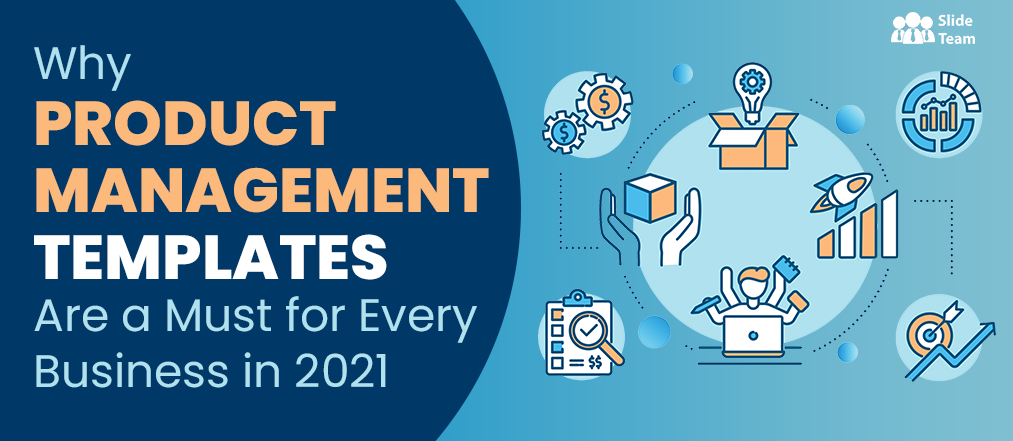


 Customer Reviews
Customer Reviews




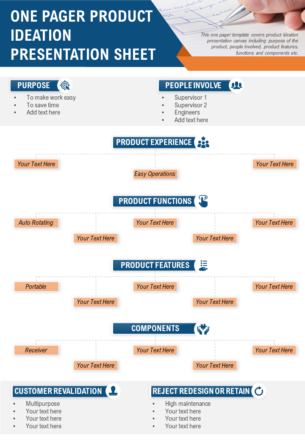



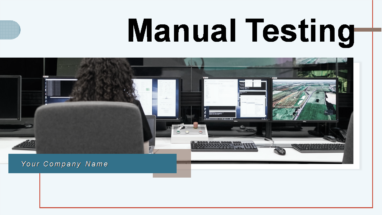
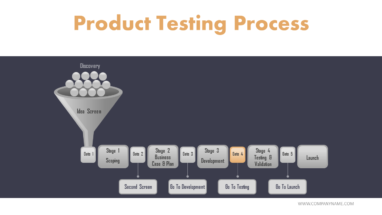






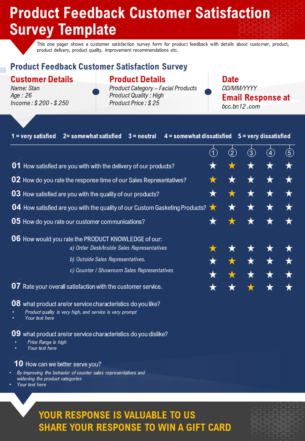






![[Updated 2023] 7 Product Knowledge PowerPoint Templates to Include in your Sales Training!!](https://www.slideteam.net/wp/wp-content/uploads/2019/02/Product-Knowledge-Training-335x146.png)
![[Updated 2023] Top 30 Product Management PowerPoint Templates for Every Product Manager](https://www.slideteam.net/wp/wp-content/uploads/2020/02/Banner-4-335x146.png)











